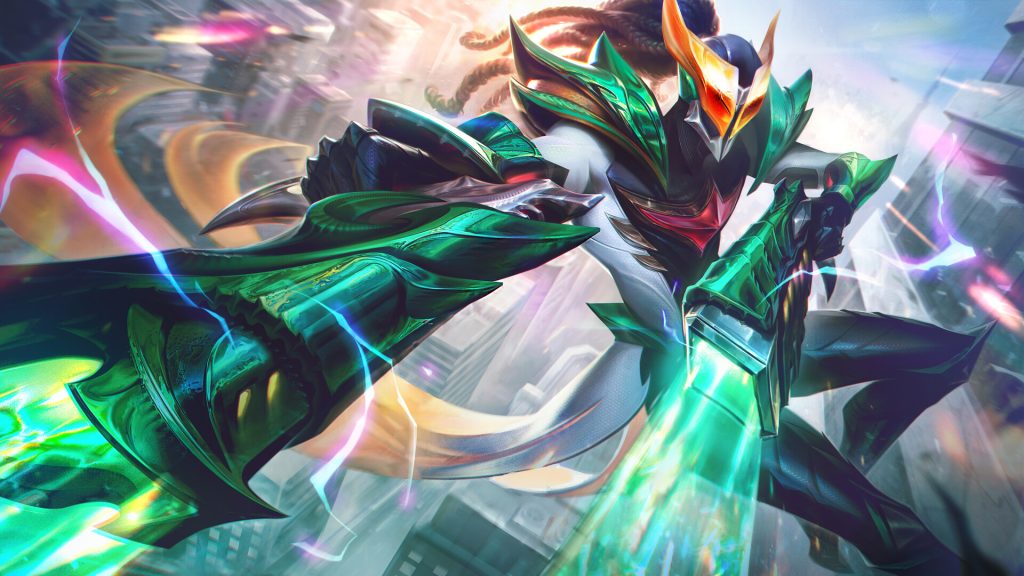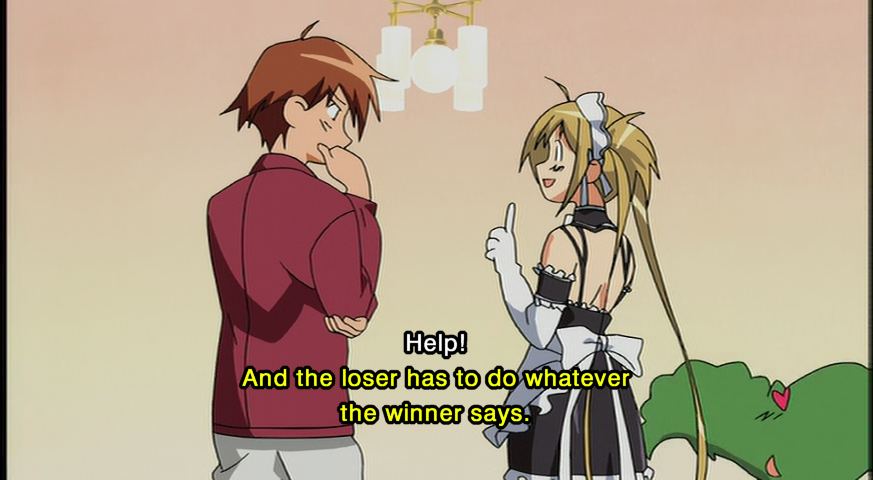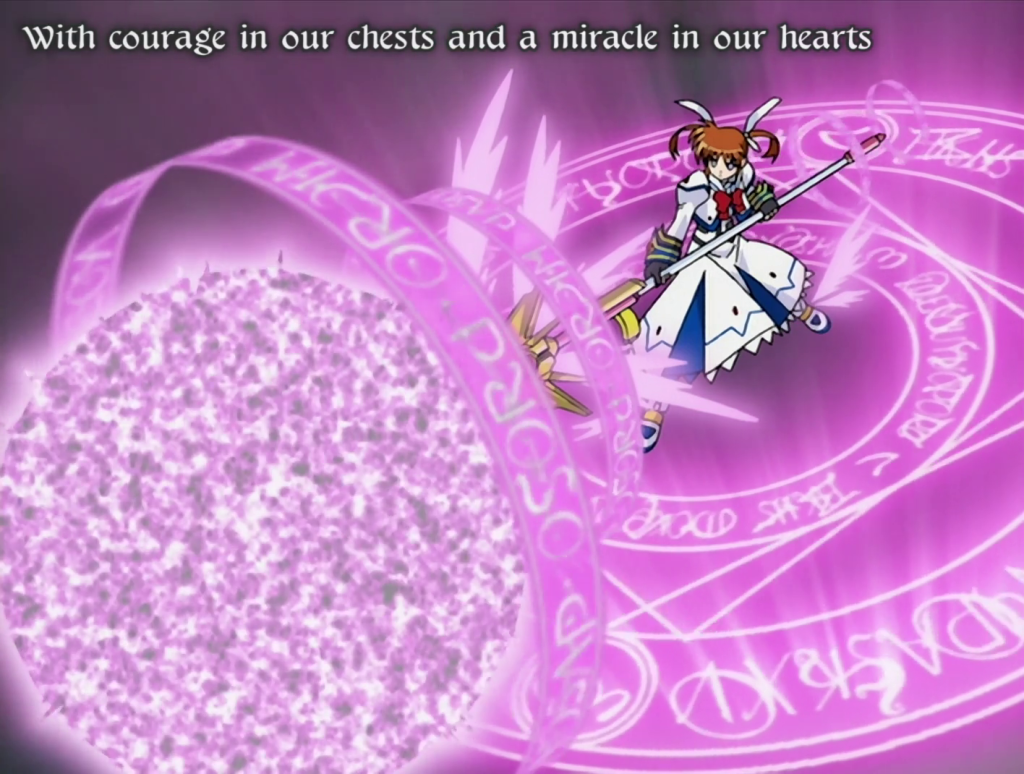your sexual market value is determined by your MMR
.webp)
Curtain Call 1
In the rise of Twitter (media) literacy campaigns, there have been qualitative measures applied to different forms of art. Partially in jest and through the repeated usage of specialized slang, music is to be considered lacking in foreshadowing and themes. It is likely that the users who propose this idea are avid music listeners, but on another side of Twitter (AniTWT vs. LitTWT), there are congruent talks, taken a bit more seriously, about video games.
The question isn’t about if video games are art; it’s about whether or not they can capture that museum-bound sense that the word invokes when spoken by a cultural bureaucrat. Art has a level of intricacy, museums, and books talking about the multitudes of historical compounding that brought it into existence; it’s very sophisticated, after all. Paintings are a good example: with their illustrious sheen of age-old paint wearing a preservative-laden coat, holding their grace in the books of history, the hundreds upon hundreds of years of societal development and the eras and reactions culminate into a piece that means much more than the brush strokes alone. Although, I wonder if video games are art… Amnesia: A Machine for Pigs has plenty of classic paintings from yesteryear.
I find that the discourse is a rather reactionary diegesis for the value of art, and that term itself can (and has) been weaponized through slight semantic change. The real cornerstone of the conversation begins with the sorts of games that truly make a game a game.
The difference here is that a game’s design operates on two key factors: the diegetic, the actual software where the play occurs, and the operator, the one who interacts with the machine to create the action. As opposed to art that stands on its own, such as a photograph or body of text, the video game can only exist when the operator communicates with the diegetic software. A machine left alone is merely an assemblage of circuits and strands of potential output. The machine, now with power, is simply pure data and image; it is only when the operator interfaces with its command sets that the true nature of action-based gaming becomes apparent.
Games are both object and process; they can’t be read as texts or listened to as music, they must be played. Playing is integral, not coincidental like the appreciative reader or listener. The creative involvement is a necessary ingredient in the uses of games.
This is not to say that an understanding of how the art is engaged with denotes it with the qualities of art, because if it were that simple, there wouldn’t be room for discussion. One aspect of the discourse I can agree with is that there needs to be a nuance to the use of language, because if we can consider someone whistling some vague melody as their instantaneous response to happy feet an art, then we stand to lose the distinction entirely.
The first thing that needs to be understood is that art has its own quality; works merely accompanied by works lauded in the world of high culture do not immediately attain that status. A poster printed upon the vestibule before an art gallery very well may have been adorned with human touch. The typography has been made to present a certain tone, while the colors and shapes cultivate a form of jubilation (seeing that the poster inherently holds the quality of advertisement). One could argue that through the intentionality bore through the vinyl, it must be considered art. To that I say, no: the problem doesn’t lie in the poster’s intention of commercialization, nor even the less didactic undercurrents built into what it wishes to express; it lies in its ability to stand on its own. To transcend the medium itself.

If you touch it, that fragile warmth will pour our into the present from the past.
D&G writes about this in “What is Philosophy?”, describing what constitutes an art, as well as hinting that their distinction allows for a “failed art”: something that doesn’t quite reach the heights the poetics tend towards.
The young girl maintains the pose that she has had for five thousand years, a gesture that no longer depends on whoever made it. The air still has the turbulence, the gust of wind, and the light that it had that day last year, and it no longer depends on whoever was breathing it that morning. If art preserves, it does not do so like industry, by adding a substance to make the thing last.
The example used denotes a young girl striking a pose amidst a scene of reverie. Alluding to the image being art, D&G offer a rather useful groundwork for what makes something art: “the thing or the work of art – is a bloc of sensations.”
It is not merely the technical prowess or artistic ambition shown within the brushstrokes or transformative prose; it is about whether or not the art can be allowed to stand on its own. Similarly to Barthes’ seminal essay, it has nothing to do with the authority of its author, and we have not always needed to consider the context of its moment is not the end all be all. D&G share a similar sentiment, but it isn’t used in the context of finding a meaning self-posited by its own; it’s to give the artwork its own autonomous power.
Art here isn’t here to be interpreted or psychoanalytically scrutinized; it must exist on its own. The art is made to be an encounter, something that stands like a monument; it will be found in the absence of man. It is a being of sensation, and it exists in itself. Another example would be Moby Dick. On its surface, the book presents ideas that are very similar to pop media, but the book itself inspires questions beyond its pages, a form of universality that supersedes the person. The book asks questions about obsession and God while engaging in an ongoing conversation.
I find that you can apply this judgment to many different games: Cruelty Squad, Disco Elysium, and Deus Ex. Those works are able to generate percepts and affect, even despite the utilitarian basis of their play, which is the uphill battle the developer must face to escape the ultimate gaze that synthesizes the perfect flavor (for the time) for a first-person shooting game.
The first issue here is the seeming dependence on the operator in their interaction with the software. Games are often created to be used—the instrumentality doctrine asserts the purpose of the game is enjoyment, to which anyone with good taste would understand that enjoyment isn’t the ultimate teleological endpoint for a work of art. And before it is misunderstood, I enjoy these types of games very much. The nature of fun in and of itself is a positive use of content, but I do not think of it to be in the same pantheon as the poetic.
Within this scheme, it’s hard to assert that the immediacy indoctrinated in the arcade is able to escape the maw of consumption and battery depletion. A percept is not how it is perceived, and an affect is not merely an emotion; they move beyond the material. Multiplayer games are a fantastic example of a necessitation on “the here and now,” as well as the capitalist logic ridding imagination from these forms.
League of Legends is not art. League of Legends is a virtual battlefield for the socius. A game of coded desire for competition meets algorithmic culture. The engagement here is one of labor & status, generating value in the digital economy of performance, a system that marginalizes, abstracts, and reinforces itself until the ethos of play is most obvious:
This game sucks.

The Culling 2
Gamers train for the next expansion of the simulation. Virilio-esque logic dictates every keystroke, speed, and domination. The game takes place within wartime harvests in infinite combat. Hyperspeeding camera control made efficient. The vague narratives keep the players engaged: fate & control, love & war, and you against us. Yet, there is no escapism that doesn’t revel in its enemy; the presence is a guise for itself. The game, much like militant industries and American propaganda, remains attached to the last remnants of the Gulf War; or, the simulation is the last thing we have.

The battleground of mythos continues in the virtual with the reenactments of grand fortress conquests and the crushing of opponents, striated within icons on a screen. The netizens of Cyberia fight in competitive tournaments, and only a few of us can graze the radiance of the 0.1% population. And to take a note from the League of Politics , “Can you explain that in League of Legends terms?”
MOBAs (or Aeon of Strife-styled Fortress Assault Games going on two sides) enact a coded Eternal Return going on both sides. The genre is most notable for a few key features:
- Battlegrounds: The core component of the genre is necessitated on the map. Every game is played on the same field of ritual: defensive turrets, navigable jungles, and lanes for strategy. The battleground is a field of militant topology, regulating players.
- Creep Score: Before one is able to buy “weapons of mass destruction,” one must therefore farm. Players fight over resources, attacking small AI-controlled creatures that, upon death, yield gold. The currency exchange is the basis of the laning phase. This is a war of attrition: one obtains and denies. A miniature war masked as neutral economics.
- Roles: Top, Mid, Jungle, Support, and Carry—all of these distinctions have specific roles that they carry out. Top is bruisers and tanks, Mid is tactical damage and map control, Jungle is teamwide utility/assassination, Support is control, and Carry does the DPS.
- MMR: The soul of the competitor. The numerical soul annihilator. It holds status, ability, and progression. If you win, you win. If you lose, you lose. The player is turned into a measurable output, data unto a statistic.
MOBAs are a bit more honest about the frayed nerves of algorithmic culture: repetitive meritocracy. The eternal return of a game without an end.
banning phase → champion select → someone plays on a Samsung fridge and can’t load in properly, so you are stuck loading into the match → farm → leave lane and fight over objectives → huge play is coordinated (or coin-flipped) → one team is defeated → a loss/gain in MMR → click the queue button again.
MOBAs, much like other genres that posit gameplay-focused intentionality, epitomize the state of play within the medium. Whereas video games like BioShock play around with intertextual ideologies through mise-en-scènes, MOBAs exist in a space that instead utilizes the insight of action and movement. The MOBA hides nothing, leaving the gamers as the authors, where every landed skill shot is a message and every recall a statement.
.webp)
the banality of evil
The carpal tunnel-inducing gameplay treats the players like machinic auteurs. Korean game cafes are almost like glorified factories, but the machines are not written with the same technical blueprints. There are ranks of machines: lesser ones that produce suboptimal textiles, some within expected means, and ones that aren’t even producing the same product.
Alongside the meta-making, MOBAs offer a technical blueprint for the stratified logic of social life. Have you ever wondered why people took grand inquisitions when trying to quit League of Legends? Why is League of Legends seen as a red flag? And why are players (namely yamatosdeath) still playing this game that garners so much cancer? Frankly, I don’t think it’s a coincidence that Dantes went onto an online therapy session to talk about his issues, emphasized by playing Hecarim.

Infinite Duress 3
Social media has had an uptick in content designed for disenfranchised men. It shouldn’t come as a surprise if you intersect with anyone in the workplace, school, or even online. There are hundreds of thousands of people with videos of Redpillers giving their two cents on social issues, people like the speakers on Fresh & Fit, Jordan Peterson, and pretty much any podcast clip pushed up by the algorithm. They’re the new forms of self-help books for the newly created audience hinging on speed and video-based aphorisms to live by. Promoting some of the apparently long-lost ideals of roughly quoted Seneca and Christianity.
The videos themselves promote and comment on ongoing ailments in society from the standpoint of a young boy who wishes for the comfort of mother’s milk and Bible stories told to them before bed. The covers of 12 Rules for Life and Reasonable Faith are safe and nostalgic, on your side against the chaotic horror of the changing waves in contemporary life. But don’t you remember the awesome masculinity of Jason Statham? Well, the redpillers are basically that. Another enemy proposed to you in the coliseum of your local grocery store: women and beta males.

Kore ga Watashi no Goshujinsama (2005)
The reception of the content ranges quite a lot. Viewers who can easily discern the absurd levels of performance from the edge of the producer’s seat can roughly equate it to their libidinal investment in the ‘system.’ The alpha male podcaster plays a role within this narrative for the obvious purpose of reigning in the economy of exaggeration intercrossed with oedipal laws of the father. Or, you can take the information espoused through gender essentialist claims as right but with a touch of empathy because “things aren’t that simple.” Alas, there are also people who engage in the discourse through Reddit or YouTube comments, talking about the ‘ugly truth’ of whatever the topic at hand may be.
The root of the desperation for lost masculinity is found through a sudden confrontation with society. The world is messy, almost impossible to grasp. The working-class suburban young adult is suddenly plunged into a world of differences, lives that are almost completely unthinkable, until maybe… maybe these things are bad? Confronted with the churning education system, where life and career are segmented into distinct ages of function, the scheme of social standings within this network is understood through the participation with its meta. In a game centered around CS and optimal champion selection/builds, it’s no wonder that the winners of the game really want others to play in the same format.
The meta forms through active syntax, sharpened by instant ripostes that conjure apocalyptic visions. Perennial jannies secure their investments, employed to enforce where possible. The patch notes of Fresh & Fit’s concept of dating announce several balance changes to the sexual meta, live-streamed as dialectical violence. Looksmaxxing is predicated on summoners’ build paths, ones that are out of date and seriously retrograde. The MMR is up for grabs, but only if you engage in a cyclical war of attrition, a tradition that must return to the good old days of its design.
The tactic of maxxing out Sanguine Pool before Transfusion confuses the balance of patriarchal play, revolting against the sacred fairness of Bruiser top laners as the solemn subject forms their own punctum of agency. Of course, the toys must be put away. Like all good games, play should only be permitted within the guidelines of the coach in order to keep its namesake’s viability. Boring, isn’t it?
.webp)
Life Form Disintegration Ray 4

2:00pm sunshine, reverberations of bird chirps to the rhythm of grindcore. The vacant sky lights up the grand stadium, shining upon the once nocturnal trainees of virtual combat. The streets are littered with torn jerseys, teams no longer representing high levels of play; the flags droop across unbothered cars as a mere multitude of colors and pointless effigies. Today is not so different from yesterday. The chairs are left unaccompanied. What was once deferred into play has become known: “Reality is just a bad video game!”
League, Dota, Eternal Return, or any multiplayer game for that matter, reveals the truth of play through disquieted frame data and outplay potential. The game is fun, for a limited amount of time, as the reality clock ticks down and you realize you’ve spent the last 5 hours in a Discord voice call playing with people you’d rather not interact with outside of the game. MOBAs give us the ultimate caricature of the disenfranchised gamer. No more of the white, mildew-ridden, Dorito- and Mountain Dew-soaked rooms of the Xbox voice battles (though the flaming meta hasn’t really changed). Now the gamers have been gentrified through capitalist logic, workouts, career goals, and far too much phallic espousing on the abstraction of the ego.
This leads to players, both big and small, announcing their departures from the game. The MMR gained is both a waste of time and misapplied value towards an otherwise pointless number. There is no gain here, no social victory to be had; it’s just another thing to gawk at before the clock ticks 12.
The character of the modern man is curious, though, before I speak, I must make it known that I aim not to reiterate the man in his punished/debilitated sense. But the man (still attached to what could have been) battles an invention of his own; the world is out to get your hobbies, your wants, and ultimately, you as well. The panopticon is built, and escaping its gaze is a two-way street.
The condition of one that can be seen right before the PC Cafe. Sell yourself as a valuable citizen and misconstrue your own suffering as you please. How do you live without this neuroticism? Pay no stocks. The faces of masculine influence play at the stakes ridden in algorithmic societies, the sanctity of violence, the want for control, and the desire for a meaning in a world with too much, something to call your own.
The two sides of Summoner’s Rift are one and the same. Both play the same game, move in the same lanes, and end with the only differing value being the win or lose screen. Both are wrought with malaise, a distaste for what the game is, and the sound of a distant loathing cackle from the depths of your own vocal chords.
>get mad
>win game
>feel nothing
Database
Aarseth, Espen. “Computer Game Studies, Year One.” Game Studies, vol. 1, no. 1, 2001, https://www.gamestudies.org/0101/editorial.html. Accessed 15 May 2025.
Deleuze, Gilles, and Félix Guattari. What Is Philosophy? Translated by Hugh Tomlinson and Graham Burchell, Columbia University Press, 1994.
Barthes, Roland. “The Death of the Author.” Image, Music, Text, translated by Stephen Heath, Hill and Wang, 1977, pp. 142–148.
Galloway, Alexander R. Gaming: Essays on Algorithmic Culture. University of Minnesota Press, 2006.
Amnesia: A Machine for Pigs. Developed by The Chinese Room, published by Frictional Games, 2013.
Cruelty Squad. Developed by Consumer Softproducts, 2021.
Disco Elysium. Developed by ZA/UM, 2019.
Deus Ex. Developed by Ion Storm, published by Eidos Interactive, 2000.
BioShock. Developed by Irrational Games, published by 2K Games, 2007.
League of Legends. Developed and published by Riot Games, 2009. www.leagueoflegends.com. Accessed 15 May 2025.
Peterson, Jordan B. 12 Rules for Life: An Antidote to Chaos. Random House Canada, 2018.
moechiavellian

Philosophy student with a penchant for Monster Energy™ before bed,
late night walks on the beach, and useful home appliances.
0259 in my room, out by 1600. Negentropy.
You know where to find me.

